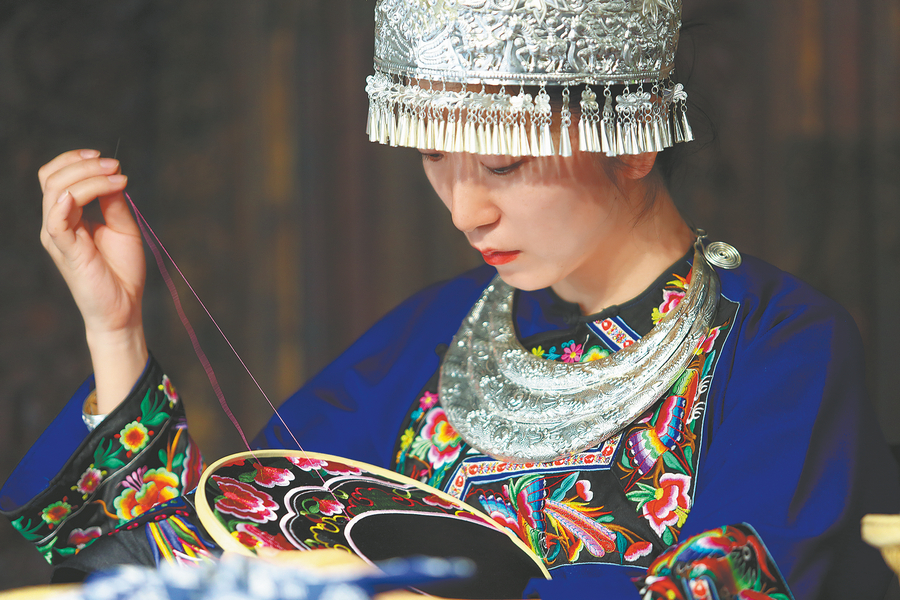

The village transformation is part of the project Valley Residents, an effort by Yi and her team to use local ethnic elements in rural settings to promote the tourism and culture industries and improve villagers' income.
Yi has developed a predisposition toward Miao embroidery and related culture as she was immersed in many ethnic celebrations throughout her childhood in Xiangxi.
"Whenever I saw the ethnic Miao costumes, I was deeply attracted to the embroidered flowers," Yi recalls.
The ethnic culture influence planted seeds of passion in Yi's heart for embroidery and saw her develop a knack for painting.
However, she didn't follow her heart and pursue an art career at the beginning. To provide for her family, Yi studied communication technology in college in the provincial capital Changsha and worked at a local telecommunications company after graduation.
Fortunately, she kept up with her painting and dipped into Miao embroidery in the interim.
"The more I practiced, the more my interest grew," she says.
In 2009, Yi finally listened to her inner voice and quit her steady job, and went to Shanghai and Guangzhou, Guangdong province, to study design professionally.
After two years of learning, Yi came back to Xiangxi and opened up her own workshop by renting a discarded warehouse of barely 10 square meters and setting up two sewing machines inside.
"I basically lived and worked at the workshop," Yi recalls, adding that she had to take care of everything, from fabric procurement and design to sewing and marketing.
As she honed her skills, Yi worked her way up to becoming a prefectural inheritor of Miao embroidery.
In 2012, Yi developed formal attire that integrated ethnic elements with modern tailoring, which turned out to be a sensation at a major government celebration event.